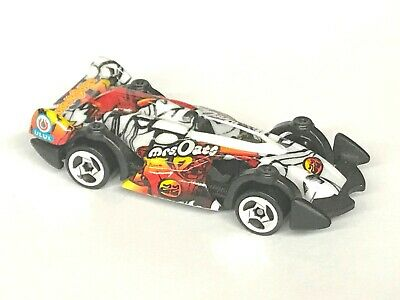
#Speed racer 2008 car backside drivers
The reactions of the family, the various drivers in training, and Royalton are all entering and exiting the frame at different times.

These features provide many points for the audience to focus on at once, such as when Royalton gives the Racer family a tour of Royalton Industries. The design and storytelling of the film take on the perspective of Speed-the child-favoring deep focus, bright colors, and cut-and-paste composition in order to create a feeling of comic book illustration. Even though he has a younger brother, Spritle, who age-wise is more childlike, because of Speed’s position within the family, he is the stand-in for child viewers and their struggles. He is the avatar, the character through which the audience vicariously experiences the story, so it’s with his character that children identify as they watch the film. He still lives with his parents in their home, and has yet to define himself as independent. Speed is the representation of the child in the film, even as his age seems to lean toward young adult. In both the context of the film’s creation and the text itself, Speed Racer empowers children within the scope of their own environments, roles, and abilities through its use of aesthetics, its use of technology, and its representation of family. Despite the seeming incompatibility of racing as a solution to these personal, familial, and social issues, Speed is able to overcome these problems through racing. The opening race of both Rex and Speed at Thunderhead establishes all the pressures and problems Speed has to overcome-bad performance at school, fatherly expectations, the soiled reputation of an older brother, a death in an otherwise tight-knit family-and the only tool Speed has to deal with these problems is racing. The Wachowskis’ previous films include The Matrix (1999) and V for Vendetta (2005), which hail far from the “kid-friendly” genre, but their distinct style and approach brings something unique to this admittedly over-charged, over-colored children’s cartoon. The Wachowskis’ Speed Racer (2008) is a strange mixture of unusual filmmakers and an even stranger concept-to turn the 1960s Japanese-American cartoon Speed Racer into a feature-length family film. The aesthetic, technology, and depiction of the family in the film allow Speed, the representation of the empowered child, to exert control over his situation and express himself through his own strengths. The Mach 5 does not, but the Mach 6 does.The character depictions of Rex, Speed, and Spritle in Speed Racer (2008) demonstrate a range of how children can be empowered within their own environments and understanding. In a nutshell, any car that enters a WRL track race must have a T-180 wheelbase. The difference is further explained in the Speed Racer: Supercharged featurette that comes with every version of the Speed Racer DVD. Due to the highly compressed time frame - possibly as little as a week - in which the Fuji track race, the Casa Cristo and the Grand Prix occur, the Racer Motors team has not had time to rebuild the Mach 6.

Speed's track car, the Mach 6, was destroyed in the crash at the Fuji Helexicon. The Grand Prix, however, is a track race. Speed races the Mach 5 in the Casa Cristo 5000 because that race is a cross-country rally. Additionally, all wheels are capable of turning independently, allowing the car to maintain forward motion no matter which way it faces, as well as to "drift" and spin while retaining a great deal of control. They are single-seaters with rocket engines capable of speeds in excess of 400 MPH.

The Mach 4 and Mach 6 (both versions) are T-180 track cars that have several key differences from street cars. The Mach 5 is a street-registered car built for rallies and other road races.


 0 kommentar(er)
0 kommentar(er)
